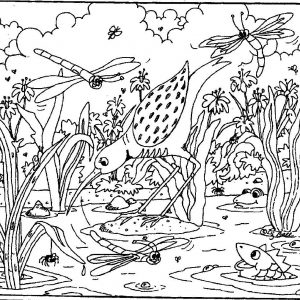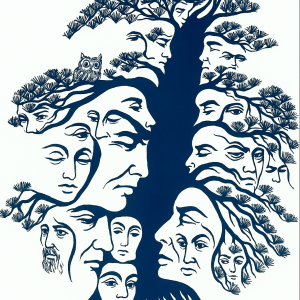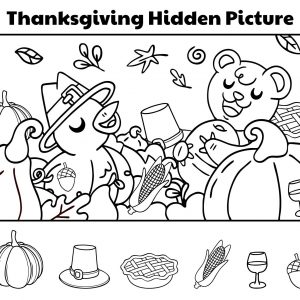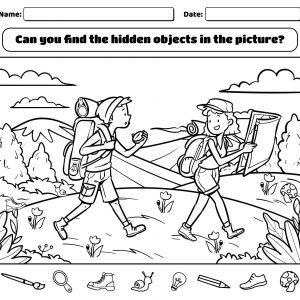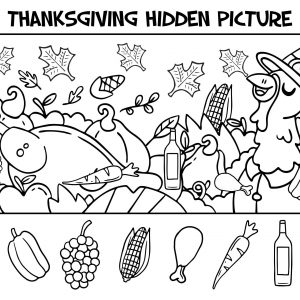The Tree of Faces: A Hidden Illusion of Nature and Humanity
Introduction: When Trees Come Alive With Human Spirit
Some artworks stop you in your tracks, not because of their complexity, but because of the way they merge two worlds into one. This drawing of a tree is one such masterpiece. At first glance, you see twisted branches and rough bark. But look again, and suddenly, faces begin to emerge—smiling, thoughtful, wise, and serene. It’s no longer just a tree; it’s a gathering of human spirits woven into nature itself. This illusion doesn’t just trick the eyes—it sparks the imagination, inviting us to see life where we least expect it.
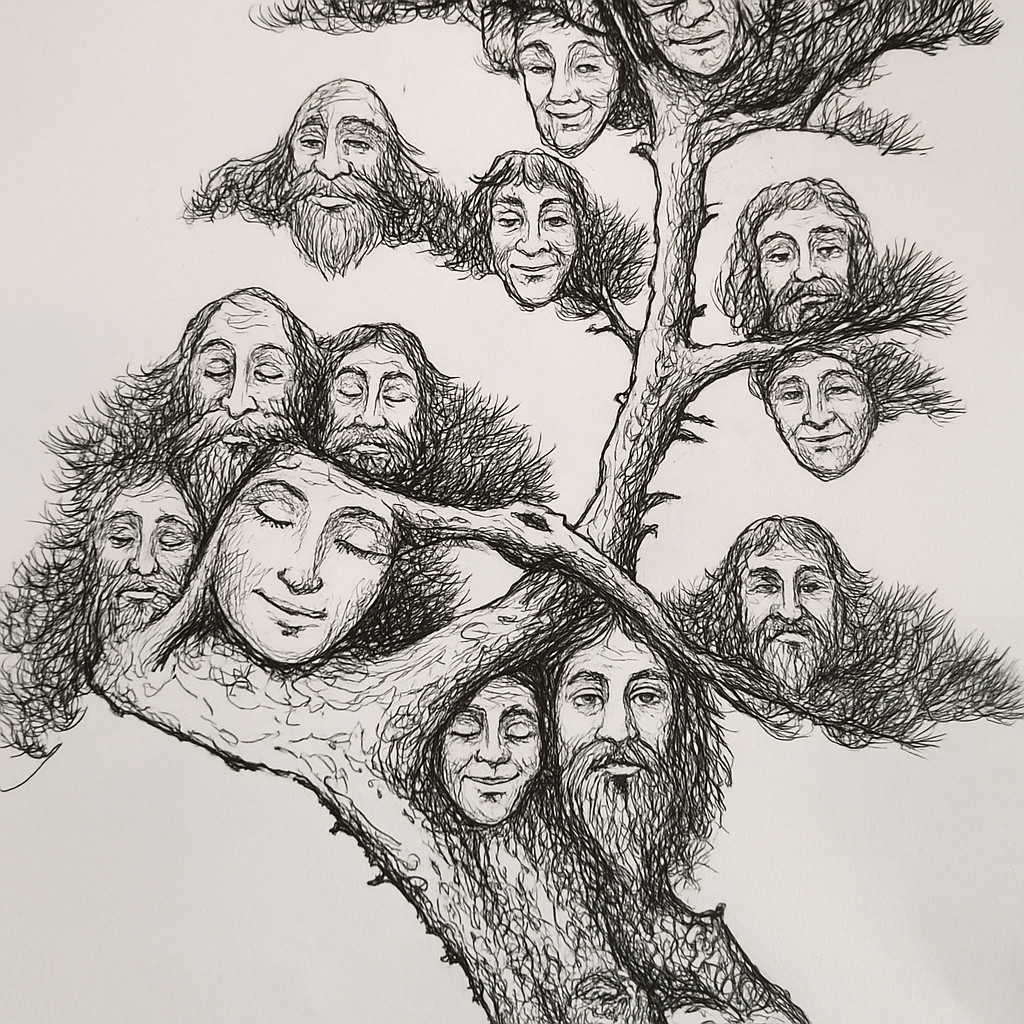
The Power of Hidden Faces in Art
Humans are naturally drawn to faces. It’s the first thing babies recognize, and even as adults, our brains are wired to seek them out everywhere—from clouds to shadows. That’s why hidden face illusions like this tree are so fascinating. The artist has cleverly used the texture of bark, the spread of branches, and the mess of leaves to form human features. The result? A powerful illusion that feels both eerie and magical, as though the tree itself carries the wisdom of generations.
The Symbolism of the Tree of Faces
Beyond its clever design, this artwork carries deeper meaning. Trees are universal symbols of life, growth, and connection. By merging human faces into the tree, the artist reminds us that humanity and nature are inseparable. Each face could represent ancestors, guardians, or the spirits of the forest. Together, they tell a story of unity—how every person, past and present, is connected to the natural world. Doesn’t it make you wonder what stories these faces might whisper if they could speak?

Why Optical Illusions Spark Curiosity
There’s a reason why illusions like this never get old: they make us question what we see. Our eyes process the image one way, but our brain interprets it another. That gap between reality and perception is what makes illusions so fun. One moment you’re staring at tree bark, the next you’re locked into the calm gaze of a hidden face. It’s like the picture has a secret, and the moment you notice it, you feel like you’ve unlocked a mystery meant only for you.
The Psychology of Seeing Faces Everywhere
Ever spotted an animal in a cloud or a face on a piece of toast? That’s pareidolia—the human tendency to find familiar patterns where they don’t actually exist. This tree drawing takes advantage of that instinct. The longer you stare, the more faces you see, each one unique yet seamlessly blended into the tree. It’s a playful reminder that our minds are not just passive observers—they’re storytellers, turning random lines into meaning.

How Hidden Object Art Boosts the Brain
Believe it or not, engaging with puzzles and illusions like this isn’t just fun—it’s also good for your brain.
- Sharpened focus: You learn to spot subtle details in busy images.
- Boosted creativity: The faces inspire imaginative interpretations.
- Stress relief: Focusing on hidden objects has a calming, meditative effect.
- Cognitive flexibility: Your brain learns to switch between perspectives quickly.
In a way, solving visual puzzles is like a workout for the mind—challenging, rewarding, and surprisingly relaxing.

Tips for Spotting Hidden Faces
If you’re ready to dive into illusions like the Tree of Faces, here are a few tricks to make your search easier:
- Step back: Sometimes the details blur when you’re too close.
- Follow the lines: Branches and bark patterns often form facial outlines.
- Look for symmetry: Eyes, noses, and mouths often appear in pairs or clusters.
- Stay patient: Some faces take longer to reveal themselves than others.
Every time you spot a new face, it feels like finding a secret treasure tucked into the branches.
The Story Within the Tree
What makes this drawing captivating is that it doesn’t just trick the eye—it tells a story. Each face seems to carry its own emotion. Some smile gently, others look wise and contemplative, while a few seem almost hidden in shadows. It’s as if the tree is home to generations of souls, each one leaving its mark in the wood. The picture isn’t just art—it’s a conversation between nature and humanity, captured in ink.
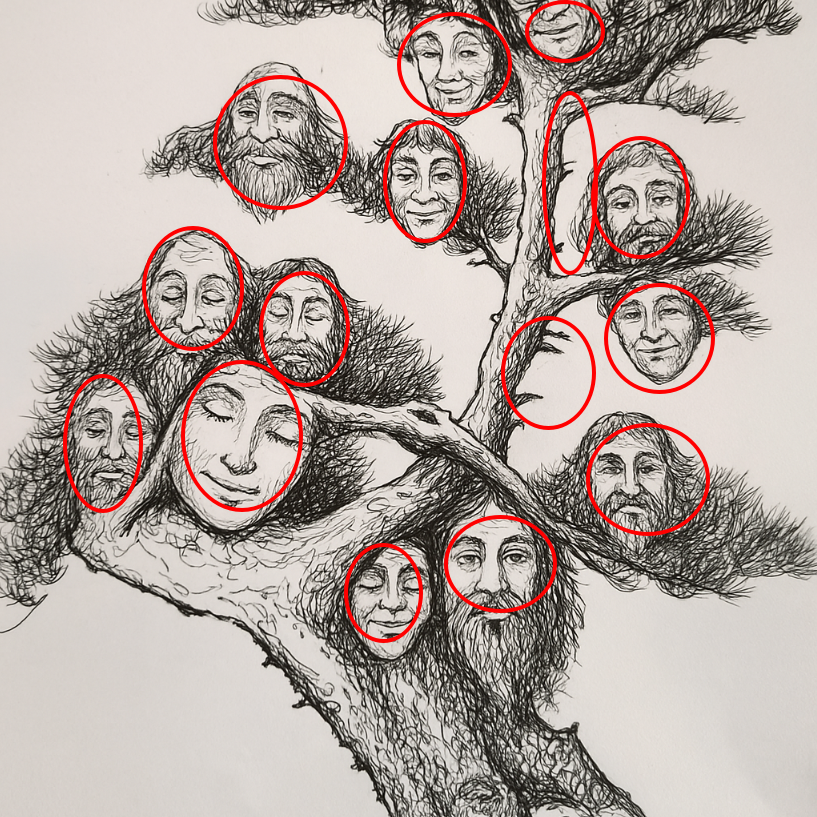
Conclusion: The Beauty of Seeing Beyond the Surface
This Tree of Faces is more than an illusion—it’s a meditation on perception, connection, and imagination. On the surface, it’s a simple drawing of a tree. But the hidden faces transform it into something richer, something alive. They remind us that beauty often lies in the details, waiting for those who take the time to look closer.
Next time you see a piece of art like this, don’t just glance at it. Pause. Observe. Let your eyes wander. Because sometimes, the most extraordinary discoveries aren’t in what’s shown—but in what’s hidden, quietly waiting to be found.
